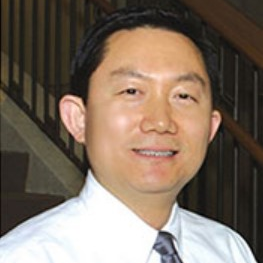Understanding Spinal Cord Injury and Repair: From Molecules to Neurocircuits and Multimodal Prostheses
A special issue of Cells (ISSN 2073-4409).
Deadline for manuscript submissions: 30 June 2024 | Viewed by 3717
Special Issue Editor
Special Issue Information
Dear Colleagues,
Each year, there are ~250,000 to ~500,000 clinical encounters of spinal cord injury (SCI) worldwide. Among them, the majority are traumatic, and more frequently affect young adults and the elderly. The rest of the cases consist of non-traumatic SCI. SCI often results in severe and lifelong disabilities such as sensorimotor deficits, autonomic abnormalities including cardiorespiratory disorders, and other serious complications (e.g., lower urinary tract malfunction, neuropathic pain, gastrointestinal dysfunction, osteoporosis, sexuality and reproduction health issues, and depression). A young age at injury and a large degree of functional loss produce a long-term high fiscal burden that is placed on the individual, their family, and society. Moreover, the daily life challenges for people living with SCI can never be assigned a monetary value. The need for a cure is obvious, but effective therapy for SCI has, to date, remained an unmet medical demand.
Encouragingly, impactful progress has been made since the 1990s in basic science research, translational studies, and clinical investigations of SCI. These endeavors aim to identify molecules and cell organelles as key players of post-SCI pathophysiology, neuroprotection, neurite regrowth, neuroplasticity, and neuroimmune modulation; attain stem cell biology insights to empower regenerative and recovery therapy development; unlock spinal cord neurocircuits for functional reinstatement; and establish the next generation of prostheses for functional rehabilitation. Further, a newly established cross-disciplinary research approach has enabled the field to decipher novel therapeutic targets, develop innovative theoretical frameworks, and formulate multimodal regiments to augment clinical efficacy.
In this Special Issue, we invite laboratory researchers, physician scientists, and academic physicians with expertise in SCI-related molecular and cellular biology, neurobiology, pathophysiology, bioengineering, biomechanics, the brain–computer–spinal cord interface, multiple assistive and robotic devices, pathology, neurology, neurosurgery, pain management, rehabilitation, and neuro-oncology to contribute original research articles, reviews, and communication articles on the aforementioned aspects concerning the current advancements in understanding SCI and neural repair. We particularly welcome papers that will shed mechanistic light at the molecular, cellular, neurocircuit, neuromusculoskeletal, or system biology level with strong translational potentials.
Dr. Yang D. Teng
Guest Editor
Manuscript Submission Information
Manuscripts should be submitted online at www.mdpi.com by registering and logging in to this website. Once you are registered, click here to go to the submission form. Manuscripts can be submitted until the deadline. All submissions that pass pre-check are peer-reviewed. Accepted papers will be published continuously in the journal (as soon as accepted) and will be listed together on the special issue website. Research articles, review articles as well as short communications are invited. For planned papers, a title and short abstract (about 100 words) can be sent to the Editorial Office for announcement on this website.
Submitted manuscripts should not have been published previously, nor be under consideration for publication elsewhere (except conference proceedings papers). All manuscripts are thoroughly refereed through a single-blind peer-review process. A guide for authors and other relevant information for submission of manuscripts is available on the Instructions for Authors page. Cells is an international peer-reviewed open access semimonthly journal published by MDPI.
Please visit the Instructions for Authors page before submitting a manuscript. The Article Processing Charge (APC) for publication in this open access journal is 2700 CHF (Swiss Francs). Submitted papers should be well formatted and use good English. Authors may use MDPI's English editing service prior to publication or during author revisions.






